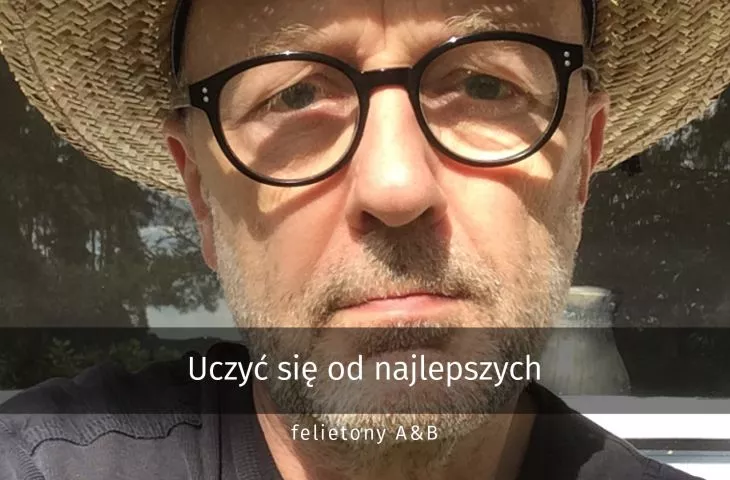Learn from the best - learn to think green
[ A&B 10'2019 original material]
In Paris, at the headquarters of the Académie d'architecture, a dream of dreaming architects is about to come true - here is one of us setting up his own small studio and within a few years he is a fantastic international success. He becomes recognized, gets awards, is invited, received and, in the best sense of the word, celebrated. Bravo Robert Konieczny! Bravo KWK Promes! Congratulations - hugs and cordiality! A super affair!
An earlier event, designed by Roma Cielątkowska in Gdansk, comes back to mind. Roma invited Robert Konieczny to lead a design workshop with her students. Konieczny took this invitation extremely seriously and came to Gdansk University of Technology together with a group of people from his studio. I was invited to the last day of the workshop, as a critic in the review of the results. As we worked together, we all quickly switched to you, and the conversation just as quickly turned into a real dialogue on arch-architectural matters. Sitting on the tables among the students, I watched Robert with a good feeling, thinking that a Witkacian conversation of significance was just happening to all of us. I wonder how it happens, I thought. How do we get away with it?
But one step at a time. I'm sure you're familiar with Sisyphus' recurring, like a boulder to the foot of a mountain, endless conversations among architects about the mismatch between academic theoretical ways of teaching and professional good design practices. These conversations are like a nightmare dream you might dream every night before working on a new competition. Here you are standing under the Sisyphean mountain of recognized architecture. Here you are once again placing your hand on your stone developed over the years. And again you feel irritated, because you know that at the beginning of the road to the Mountain stands a cursed, bent plaque with a deeply engraved warning: Beware! Not the stone on this road. You feel goosebumps on the back of your neck.
Against this warning and against the myth, Robert Konieczny rolled his stone onto the Mountain. And I think I know how he did it. I juxtapose Robert's images and words from that Gdansk workshop at Roma's with photographs and videos of his iconic projects. Here, in these two moments, Necessary is - note - the same and the same. In building real architecture, the one formulated for certain people and built within a certain budget, Robert retains the courage of academic theoretical (because not yet practiced) thinking, retains the joy of conducting academic (because not yet proven by any practice) experiments. The aatrial house is an entirely new type of house. The safe house is for the first time safe architecture, not technology. What delights me - and I think the world delights the same - is the courage of this academically uncompromising, student-young, "college-like" thinking imagination of Robert Konieczny. His growing experience is no substitute for the uncompromising nature of his dreams.
I am convinced that this formula of thinking and acting was the key to the excellent agreement in the academic workshop room in Gdansk. It is worth learning from the success of Robert Konieczny. It is worth transferring his formula of action to other important issues as well.
***
Today, not only the architecture of luxury villas and buildings, but also the architecture of the city - urbanism - is that Mountain on which we find it so difficult to roll stones. On the Mountain of Urbanism, recognition must first come from local offices, and this makes the road extremely steep, because just as the jury of competitions usually looks for new ideas, the design culture of offices trusts good practices more. But these are just procedures - the real predicament is at the foot of Urbanism Mountain, because the aforementioned nightmare plaque was erected here not long ago, and its inscription seems to have been carved by a still uncertain hand: Beware! Not this stone, not this way.
The overheating of the Earth requires a rethink-then-then, how we want-we-can-change-our-cities. For the art of architecture, unlike for technology, the most important question remains: what new aesthetics do we want to mold these cities with? An intuitive recognition we already have: cities must be green, just as nature is green. Scientific analyses indicate that the city, however, is the natural (not just cultural) habitat of modern humans and animals. So we need to start dreaming anew, boldly, young - academically! We need the courage to realize the ecotheories that have arisen in universities and scientific institutions, the courage to dream of the eco-city.
In order not to remain in a cloud of mere ideas, in order to explain what it means to be skeptical of good practices, to trust academic theories, I will ask a few sample questions. How is it possible that stores and shopping malls still can't handle daylight and natural air? How is it possible that parking lots are still not squares full of trees? That trees are still being cut down on roads and streets? After all, it's all naive marketing-technological functionalism, as silly as the proposal to fill in rivers to deprive us of the risk of falling off a bridge.
We need green thinking - thinking with a green leaf stuck to it, which used to be the sign of those who are just learning.
***














